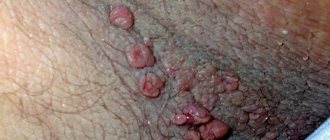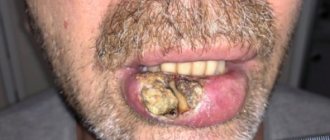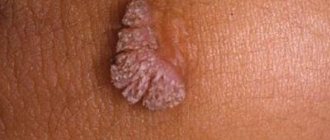Every woman has ever discovered a white coating on her labia. If the discharge is not accompanied by an unpleasant odor, swelling, burning and other symptoms, then this is normal.
Such leucorrhoea does not require treatment. In situations where a woman suffers from additional symptoms, she needs to visit a doctor. White plaque may indicate various gynecological or sexually transmitted diseases.
Itching and swelling of the labia during pregnancy: what to do?
After all, if you cannot correctly determine the cause of the problem, then the inflammatory process can ultimately affect the ovaries and appendages and, as a result, this can even lead to infertility.
Diseases that manifest themselves as dryness, itching, swelling and rash:
- Candidiasis
- Allergy
- Inflammation of the bladder and kidneys
- Benign and malignant neoplasms
- Vaginal dysbiosis
- Hormonal disbalance
- Bacterial vaginitis
- Genital herpes
- Chlamydia
- Trichomoniasis
- Leukoplakia
- Syphilis
- Lichen
- Psoriasis
- Diabetes
- Scabies
- Genital dermatitis
Itching and swelling of the labia during pregnancy
Almost every pregnant woman faces such a problem as itching and swelling of the genitals. And although in most cases such changes can be attributed to physiological, sometimes they can indicate that the expectant mother is not all right with her health.
Sometimes swelling and itching in the labia area is caused by thrush, vulvovaginitis, varicose veins or bartholinitis. That is why, if such symptoms occur, a pregnant woman should immediately see a doctor.
As for the treatment of such pathologies during pregnancy, in most cases doctors prefer to carry it out without the use of antibiotics. In view of this, if they see that the disease is in the very initial stage, they recommend treating it with antifungal, anti-inflammatory and regenerating ointments and gels.
Remedies to help get rid of the problem:
- Troxevasin
- Heparin
- Tetracycline ointment
- Chamomile decoction
A white crust on the labia indicates a fungal infection of the skin. The causative agent is fungi of the genus Candida, which are part of the normal microflora of the female genital organs, but under the influence of unfavorable factors (lack of personal hygiene, antibiotics, hypothermia) begin to actively multiply.
Fungal infections of the labia also include lichen versicolor, which causes the formation of yellowish or brown crusts. Infection occurs under the following conditions:
- Through the personal belongings of a sick person;
- Transfer of fungi to the labia through unwashed hands;
- Increased sweating;
- Sexual contact with an infected person.
Fungal infections are seasonal, and because of them, crusts on the labia appear more often in the summer.
In addition to allergen exposure, hereditary predisposition plays a role in the occurrence of these diseases. If one parent has an allergic skin disease, the child's chance of developing it increases by more than 60%.
In addition to the fact that the labia become crusty, the woman experiences unbearable itching. The crusts can have different colors. With neurodermatitis, they merge with the skin or have a grayish tint. In eczema and atopic dermatitis, the crusts are red.
If the skin of the labia is covered with a dry crust, the cause may also be psoriasis or lichen planus. The causes of these diseases are not fully understood, but there are several theories of their origin:
- Metabolic disorders in the body and lack of vitamins;
- Hormonal imbalance, which is associated with the frequent occurrence of psoriasis in women during menopause;
- Hereditary predisposition;
- Constant stress;
- Allergic agents.
secretion When normal
A healthy woman’s vagina secretes a special fluid with the following characteristics (see Discharge):
photo like snot
Normal discharge
white mucous thick
Mucous membranes are transparent
- the volume is up to 5 ml per day;
- transparent, whitish or milky;
- has a uniform consistency;
- mucous, or thick viscous;
- has small seals (does not have 4 mm);
- more the smell is slightly sour or completely absent;
- not accompanied by burning, itching, redness and swelling.
If the odorless white discharge matches this description, then there is cause for concern. But secretion can change during a certain period of the cycle and for other reasons that are not related to pathology.
What diseases does white plaque on the labia indicate?
White plaque on the labia is a fairly common phenomenon, the manifestation of which is associated with the complex structure of the body of the fair sex. It can represent either a variant of the norm or be an alarm bell indicating the development of a pathological or inflammatory process. How to distinguish one situation from another?
When is a raid not dangerous?
In this case, the cheesy coating on the genitals (in medical terminology - smegma) will either not have any strong pronounced odor at all, or will smell a little sour. This parameter depends solely on the individual vaginal microflora. At the same time, at different periods of the cycle, the density, structure and smell of the discharge may change.
How to suspect a deviation from the norm?
If, in addition to white plaque on the labia, you notice other warning signs, this may indicate a gynecological disease of varying severity. We are talking about symptoms such as:
A patient who experiences all or some of the above symptoms should consult a specialist who will make one of the following main diagnoses:
- Genital herpes;
- Thrush (candidiasis), provoked by yeast-like fungi of the genus Candida;
- Violation of the vaginal microflora, which is associated with neuropsychic disorders, a malfunction in the hormonal system, long-term use of antibiotics or the penetration of bacteria from foreign microflora of the sexual partner into the body;
- Inflammatory and infectious diseases of the genitourinary system;
- Changes in the background and composition of hormones in girls during the first menstrual bleeding;
- Vaginitis or vulvovaginitis;
In addition to prescribing complex treatment, the doctor will recommend that the patient eat foods rich in vitamins, wear comfortable things, especially comfortable underwear (synthetics will need to be excluded from everyday use), and wisely select products for the care of intimate areas, because soaps, gels, bath foams and creams may contain components that cause individual intolerance
You will also need to pay attention to the mode of changing pads during menstruation.
Thrush
About 70% of women suffer from genital candidiasis at least once in their lives. In the absence of timely treatment, the disease can transform into an acute and then into a chronic form. Thrush manifests itself mainly in the following 3 cases:
- When the vaginal microflora changes during the period of the beginning of sexual activity.
- During unprotected sexual intercourse.
- When a girl reaches puberty during adolescence. The key factor is hormonal fluctuations.
In advanced forms, a rash may appear on the labia and discharge with an unpleasant odor.
Vaginitis
Vaginitis is an inflammation of the vaginal mucosa. With vulvovaginitis, the external genitalia also become inflamed in a similar way. The third type, vulvitis, affects the clitoris and labia. All 3 diseases are common in gynecological practice and are usually provoked by one of 10 reasons:
- STDs (chlamydia, gonorrhea, the aforementioned vaginal candidiasis, trichomoniasis and others).
- Weakened immunity as a result of an infection.
- Obesity, diabetes, menopause, various ovarian diseases. In each case, there is a decrease in the endocrine function of the secretory glands.
- Prolapse of the vaginal walls or gaping of the genital slit.
- Irritation of the vaginal mucosa or carrying out actions that injure the area of the vagina and uterus.
- Vascular disorders and senile atrophy.
- Allergy to condoms or medications inserted into the vagina.
- Long-term use of antibiotics.
- Lack of personal hygiene.
- Ignoring hygiene rules when engaging in sexual activity.
Herpes
Genital herpes is a recurrent viral disease that affects the mucous membranes of the vagina. White plaque on the labia is accompanied by the appearance of blisters, ulcers and erosions.
The patient's inguinal lymph nodes are enlarged, symptoms of intoxication are observed, as well as swelling, a burning sensation and redness.
In the vast majority of cases, herpes is transmitted from a carrier of infection to a healthy person through oral-genital, genital and anal-genital contact.
However, it is also possible to become infected by airborne droplets or rarely encountered in the household (through wet hygiene items), self-infection (transfer of pathogenic microorganisms from the face to the genitals) and transmission of the disease from mother to child during gestation.
When plaque speaks of disease
In some cases, white discharge indicates diseases of the reproductive system. In these situations, a whitish coating is only an indirect sign of pathology; in addition to it, women will experience a number of other unpleasant and painful symptoms.
Among them: burning, severe itching of the genitals, pain when emptying the bladder or having sex, hyperemia and swelling of the labia and clitoris, redness and dryness of the mucous membrane.
Photos of reasons
Women need to seek help from a gynecologist. The doctor will examine the vaginal mucosa, collect anamnesis, and give directions for the necessary tests. After receiving the results, doctors will make a diagnosis and prescribe treatment.
The most common diseases of the reproductive system that cause white plaque on the inner lips include: thrush, genital herpes and vulvovaginitis.
Thrush
If leucorrhoea on the labia minora is accompanied by a sour smell, and the discharge itself is similar in consistency to cottage cheese, then we are talking about thrush or vaginal candidiasis. This disease is caused by Candida fungi. They are found in the microflora of every person, but with weakened immunity, fungi begin to multiply.
Other symptoms include:
- swelling of the genitals;
- severe itching;
- redness of the vulva;
- pain when urinating;
- severe pain during sexual intercourse.
Typically, vaginal candidiasis appears in women during pregnancy, after taking antibiotics or hormonal drugs; as a result of long-term chronic diseases that have weakened the immune system.
White plaque due to herpes
Genital herpes is one of the most common causes of plaque on the labia. Once in the body, the virus constantly circulates in the human blood. Treatment only alleviates the patient’s condition, the relapse rate is over 98%.
Herpes is transmitted through unprotected sex (and the type of sexual relationship is unimportant). Blisters filled with clear or yellowish liquid appear on the genitals. Tingling and itching appears. The ulcers burst, and in their place cracks appear, which are covered with a white coating. Soon the wounds tighten and heal.
Usually herpes is mild, but sometimes the virus can affect the cervical canal, urethra, and anus.
Vulvovaginitis
This is a disease in which the vaginal mucosa and external genitalia become inflamed. The pathology is caused by staphylococci, streptococci, gonococci and other microorganisms. Representatives of the fair sex develop a white coating.
Leucorrhoea is foamy, with air bubbles and an unpleasant smell of rotten fish. Ladies experience pain when urinating or having sex. The disease is also accompanied by itching and hyperemia of the genital organs.
Usually the disease occurs against the background of sexually transmitted diseases (chlamydia, gonorrhea, trichomoniasis). It also appears after taking antibiotics, after damage to the vaginal mucosa, as a result of disruption of the endocrine gland.
Cyst on the cervix of the uterus
A cyst is a benign neoplasm that forms in the cervical canal or in the area of the vaginal cervix of the uterus. It consists of glandular cells that are filled with fluid and visually resemble white convex spots.
Such spots are not neoplasms. Leukoplakia can be single or multiple in nature. When the cyst reaches a size of more than one and a half to two centimeters, it happens extremely rarely that the pathology is distinguished by the following symptoms:
- bloody, bloody, brown discharge;
- pain in the lower abdomen;
- pain and discomfort during sexual intercourse.
You can diagnose a cyst during an examination using a gynecological ultrasound speculum or.
Differential diagnosis with true whites is carried out by spots during extended colposcopy: areas of non-leukoplakia are stained with iodine, while the epithelium of the cysts above is not changed and takes on a brown color.
During the examination, the hormonal status is necessarily assessed, background smears are examined for urogenital infection. The pathology does not pose any particular danger and, as a rule, only requires observation. Cysts that are large in size and prone to growth are recommended to be opened.
Treatment
Features of treatment of neoplasms are determined taking into account the cause of their occurrence. So, if they are caused by non-compliance with hygiene rules, it is sufficient to correct the latter with daily water procedures and the use of antiseptic hygiene products.
Miliaria can be treated with special drying preparations or regular baby powder.
More serious diseases that are viral or bacterial in nature require specific treatment, which is prescribed by a doctor, based on the stage and nature of development.
- If there is no suggestion that the growths are caused by an infectious disease, it is recommended to treat the rash with a disinfectant solution. In case of an allergic reaction, take antihistamines, and in case of hormonal imbalance, take corticosteroids prescribed by a doctor.
- For any etiology of the rash, it is recommended to take vitamin complexes and immunomodulators, which increase the body’s protective function, thereby accelerating recovery.
- Papillomas and condylomas are removed by laser or cryodestruction. Radical surgery is performed in exceptional cases. After removal of the tumor, it is subjected to histological analysis, which will determine the nature of the tumor (malignant or benign).
- If the cause of the rash is the development of molluscum contagiosum, they resort to the use of liquid nitrogen or laser techniques. Pimples caused by genital herpes are lubricated with special antiviral ointments. It could be Acic or Acyclovir.
- If the diagnosis of Fordyce granules is confirmed, laser or cryodestruction is prescribed.
Preventive recommendations
- To avoid the appearance of white rashes on the labia minora, you must follow some simple rules. First of all, this is personal hygiene. It is recommended to take a shower daily in the morning and evening, and more often during the hot season. If an unnatural rash is detected, it is recommended to use only those products that do not provoke an allergic reaction, that is, without dyes or fragrances in the composition.
- Underwear should be made of natural material and should not compress the genitals. It is better to choose products made from cotton - a material that allows air to pass through well and prevents the “greenhouse effect”.
- Panty liners and panty liners should not contain fragrances. These products are changed every 4 hours. Shaving of hair in the genital area is carried out along the line of the integument with a special epilator. A regular razor often causes irritation. To remove hair, it is recommended to use special depilatory products.
Conclusion
If you cannot avoid the appearance of a rash on the labia minora, you should not self-medicate, but should immediately consult a doctor. Only comprehensive treatment of the symptom will help achieve a speedy recovery.
In addition, if there is improvement and most of the tumors have disappeared, there is no need to stop treatment prematurely.
It must be remembered that even after complete elimination of the cause of the rash, the problem may return again.
Therefore, it is important to follow preventive recommendations on an ongoing basis. It is easier to prevent any disease than to quickly deal with it and its negative consequences
Prevention
In order for life to be fulfilling, without various discomforts in the intimate area, a woman needs to adhere to simple rules:
- wear high-quality underwear made from natural materials;
- outerwear should not be too tight;
- avoid casual unprotected sex;
- strict adherence to personal hygiene, use intimate gels (have high acidity);
- Lead a healthy lifestyle: eat plenty of fruits and vegetables, dairy products, reduce your consumption of sweets;
- try to avoid stressful situations;
- every 6 months a preventive examination by a gynecologist is required;
- Do not constantly use panty liners, they prevent the skin from breathing.
Remember that only a specialist in his field can provide quality assistance. For any discomfort in the intimate area, consult a gynecologist.
You can ask your question to our author:
Papillomas
When a woman notices the presence of atypical formations in the intimate area, she needs to make sure that these are not papillomas.
Since HPV is transmitted sexually, the provoking factors for infection of the body are:
- Having promiscuous sex life;
- Entering into intimacy at an early age;
- Neglecting to use contraceptives such as condoms;
- Constant change of sexual partners;
- The presence of bad habits, including smoking, alcoholism and drug addiction, which significantly reduces the level of immunity;
- The presence of concomitant urogenital infections: chlamydia, ureaplasma, mycoplasma, syphilis, herpes, trichomoniasis;
- Vitamin deficiency and immunodeficiency state;
- Taking cytostatics.
A special feature of viruses is that they are quite sensitive to a hormone such as progesterone, an increased production of which is observed in women during pregnancy. That is why pregnancy is a factor against which the progression of HPV begins.
The disease on the skin of the labia does not occur immediately. The incubation period can last from 2 months to 10 years. The danger of the virus is that it has a high level of oncogenicity, so cervical cancer can develop against its background. When the vaginal vestibule, anus, labia minora and majora are affected, in most cases genital papillomas are diagnosed.
Warts that appear in the intimate area can be of various types:
- White formations are small in size, pointed in shape, which are often localized on the labia majora.
- Smooth and round papules, red-brown in color, ranging in size from 1 to 4 mm.
- Large condylomas that occur against the background of a strong decrease in immunity, which is often observed in women during pregnancy.
- The new growths are flat, have a gray-brown color, as well as a red or brown tint, sometimes there are spiny protrusions on their surface.
In most cases, papillomas are covered with a white coating, while the formations themselves are quite dense to the touch. If a woman suspects that she is infected with the human papillomavirus, she should consult a doctor. The specialist will make a final diagnosis and recommend the most appropriate method to solve the problem, for example, cryodestruction, electrocoagulation, laser or chemical removal.
After this type of exposure to the virus, 75% of patients experience recovery
It is especially important to identify papillomas that form on the mucous membrane of the cervix. To combat them, doctors suggest applying applications with the following drugs: Podophyllin, Podofilox, Solkovagin
It will also be necessary to increase the body's protective abilities with the help of immunostimulants: Interferon, Neovir, Cycloferon, Viferon.
It is also possible to carry out local therapy using special creams, ointments, and suppositories. If the disease is advanced, then the solution to the problem will be surgical removal of the tumors. In this case, doctors may suggest conventional excision with a scalpel, the use of a dynamic loop, radio wave, laser, or ultrasound removal. Vaccination can be carried out as a preventive measure.
White vaginal discharge due to fungal infections
Yeast infections (usually caused by yeast) appear as a thick, raw, white, odorless discharge that is often accompanied by a burning or itching sensation. Vaginal fungus is called candidiasis because it is most often caused by fungi of the genus Candida.
Abnormal white vaginal discharge is a sign of infection caused by bacteria or fungi. Treatment of bacterial infections requires antibiotic therapy; all medications are selected with a gynecologist after tests. To treat vaginal candidiasis, oral medications, ointments, creams or antifungal globules are used - these are also prescribed by a doctor.
ONLINE REGISTRATION at the DIANA clinic
You can sign up by calling the toll-free phone number 8-800-707-15-60 or filling out the contact form. In this case, we will contact you ourselves.
Treatment of white plaque
If the discharge is caused by natural causes, then no therapy is required; the leucorrhoea goes away on its own. But it is necessary to maintain personal hygiene, wash twice a day. You should not use ordinary soap, it dries out the mucous membrane. Stores sell special intimate hygiene products.
For thrush, it is recommended to take antifungal drugs (Fluconazole, Itraconazole, Nystatin) and take a course of vaginal suppositories (Diflucan, Pimafucin, etc.).
Antiviral drugs (Acyclovir, Zovirax) are used to treat genital herpes. At the same time, you should take a course of immunomodulators and vitamins.
Treatment of vulvovaginitis depends on the pathogen. Antibiotics from the tetracycline class and douching with zinc or copper sulfate are usually prescribed.
Conclusion
When leucorrhoea, itching and other symptoms occur, many women begin to panic. They don’t know why the labia itch and a white coating appears on them. The causes of discharge can be natural, which do not require medical intervention. In the second case, the signs indicate the presence of gynecological diseases.
Causes of white plaque
There are several groups of factors influencing the appearance of discharge. Some of them are the body’s natural reaction to hormonal changes. These are harmless causes that go away on their own. Another group is associated with female diseases or diseases that are sexually transmitted.
Common natural causes include the following:
- Pregnancy - in the first time (especially in the 1st trimester), the volume of discharge in women significantly increases. This directly depends on hormonal changes, with a large release of progesterone. The body weakens the immune system so as not to reject the fetus. The unborn child is a foreign object in the uterine cavity, so it must be protected.
- Adolescence – during puberty, a girl’s body undergoes restructuring. This occurs from 11 to 18 years of age. At this time, the microflora of the vagina is disrupted, often a white coating forms between the labia and on them. After hormonal changes, the microflora becomes normal and the amount of whitish discharge returns to normal.
- Changes in microflora after sexual activity - when a girl begins sexual relations, at first the body undergoes changes. The fact is that the female microflora of the external organs comes into contact with foreign microflora. This leads to the appearance of a white coating. This condition goes away on its own, so there is no need to worry about it.
- The most common natural cause is the accumulation of smegma. This term refers to a mixture of secretion secreted by the sebaceous glands of the labia, dead epithelial cells of the mucous membrane and lubricant (it is necessary to moisturize the vagina). If smegma accumulates in large quantities, this indicates insufficient personal hygiene. With infrequent washing, the discharge may appear.
Smegma is a normal phenomenon; a white coating can be noticed even in girls of preschool age. In order to get rid of it, it is enough to wash your baby regularly. Twice a day will be enough.
Discharge in a newborn baby is a natural reaction of the body. The child adapts to unusual conditions. Discharge on the labia can be not only white, but also pink-brown. This symptom will subside 2 to 3 weeks after birth. The baby needs to be bathed 1-2 times a day, but you should not remove all the smegma from the child. It protects the genitals by preparing them for the environment.
Why does white vaginal discharge appear?
The content of the article
Physiological, clear or white vaginal discharge consists of sloughed epithelial cells, bacteria and cervical mucus. It is secreted by the cervical glands and its main tasks are to protect the private parts from infection and damage, moisturize the vagina, get rid of pollutants from the genital tract and facilitate pregnancy.
Discharge from a healthy woman: the secretion is homogeneous, not too abundant and without lumps. Due to the presence of lactobacilli, the secretion reaction is acidic (pH = 3.5-4.5). Thanks to this pH, the secretion performs a protective function against the development of pathogenic microbes.
Normal vaginal discharge is odorless and has the consistency of mucus. The secretion is usually transparent, but can also take on a white color.
The following facts may indicate infection by pathogenic microorganisms: a change in the consistency, smell or color of the discharge.
Types of neoplasms and their treatment
If the white growths are caused by genital herpes, the complex results in an itching syndrome and sometimes pain, especially if they are rubbed by underwear. Such pimples quickly turn watery, and eventually burst, leaving behind weeping wounds.
A white spot on the labia majora or labia minora is a characteristic sign of condyloma or papilloma. In this case, the neoplasm has a sharp tip, a color that does not differ from healthy skin and mucous membranes.
Pain and itching syndromes do not occur, but there is a risk of degeneration into oncology due to constant friction with underwear.
Fordyce granules are seborrheic cysts that are uniform in size, light in color and small in size. Photo symptoms of neoplasms can be found on relevant forums or special medical websites.
What it is
Normally, plaque on the reproductive organs looks transparent and slightly slimy. Its color and consistency changes depending on the period of the menstrual cycle. In the middle of the cycle, when a woman ovulates, it becomes thicker and acquires a whitish color. Towards the end of the cycle, closer to menstruation, it becomes more abundant.
All this relates to physiological phenomena, without causing concern or discomfort. This type of plaque can also be observed in girls. And also copious white mucous discharge can occur immediately after intimacy. This phenomenon is associated with increased secretion of the mucous membrane.
But sometimes white discharge can be bothersome if it is combined with the following symptoms:
- itching in the labia area. It can be constant, cause severe anxiety to a woman and even deprive her of sleep at night;
- swelling and redness of the skin.
- Intimate organs swell; when touched, a woman may experience pain;
- pain during intercourse;
- dryness of the mucous membrane and skin;
- burning between the labia;
- unpleasant odor of discharge;
- impurities of blood, pus. The coating takes on a green tint;
- pain when urinating;
- pain in the lower abdomen;
- the appearance of ulcers and rashes on the skin and mucous membranes of the reproductive organs;
- pain in the vagina;
- increase in body temperature.
These symptoms may be the first signs of the development of serious diseases for the female body.
Dysbacteriosis
The most common cause is vaginal dysbiosis.
This pathological condition occurs when there is a massive death of “beneficial” bacteria in the vagina. It occurs due to improper washing with inappropriate products for this procedure, as well as with prolonged use of antibacterial drugs. In addition, the development of dysbiosis can be affected by very frequent washing of organs. Changes in the vaginal microflora occur due to frequent douching.
Dysbacteriosis appears as a cheesy discharge on the labia minora. Usually, with vaginal dysbiosis, no other symptoms are observed. The main manifestation is copious discharge.
Thrush
The second reason is thrush. Or, in medical terms, candidiasis. It is a fungal infection of the reproductive organs. There is swelling, redness of the labia and itching. Manifestations of the disease may increase and become pronounced.
Thrush often develops against the background of vaginal dysbiosis. Or it can manifest itself when infected with fungi through sexual contact from one’s partner.
Other reasons
- If a rash appears, then urogenital pathology may develop. For example, syphilis, gonorrhea, herpes virus. With these diseases, severe swelling, rash, abdominal pain, and increased body temperature will also be observed. The discharge may become purulent and have a strong, unpleasant odor.
- In addition to the development of diseases, white discharge can occur due to wearing tight underwear, especially if it is made of synthetic materials.
- Another factor may be insufficient hygiene, wearing sanitary pads for a long time and not changing them in a timely manner.
- The cause may be various hormonal changes in the body. Expectant mothers very often encounter this problem, since during pregnancy, vaginal enlargement occurs, which leads to an increase in secretion.
Treatment of vulvar leukoplakia
| We start by organizing feelings and thoughts and achieve success with the help of natural medicines and spa factors. There is EXPERIENCE, there are RESULTS, there are ways to ACHIEVE stable remission. |
CLINIC FOR TREATMENT OF LEUKOPLAKIA - this is the name of the Resort Clinic for Women's Health in Pyatigorsk by satisfied patients from many cities of Russia, near and far abroad, who have achieved a state of stable remission of leukoplakia.
TREATMENT OF LEUKOPLAKIA OF THE VULVA is one of the priority areas of scientific and practical activity of our Clinic.
For more than 20 years, we have been SUCCESSFULLY TREATING VULVAL LEUKOPLAKIA, achieving STRONG REMISSION and a clear improvement in the quality of life.
In the treatment of leukoplakia, we do not use painful and traumatic methods and give PREFERENCE to physiological, effective and time-PROVED treatment METHODS.
At the Women's Health Resort Clinic, TREATMENT OF LEUKOPLAKIA begins with psychometric testing.
PSYCHOMETRIC TESTING allows us to identify the underlying psychological causes of leukoplakia.
Based on the results of psychometric testing, we carry out PSYCHOLOGICAL CORRECTION in order to normalize the processes of excitation-inhibition in the cerebral cortex and hormonal levels.
Normalization of the psycho-emotional state based on the experience of doctors at the Women's Health Resort Clinic is the pathogenetic basis for the successful treatment of vulvar leukoplakia.
The study of immune status (IMMUNOGRAM) allows you to IDENTIFY and individually correct DISORDERS of the immune system (immunity) using natural medicines.
Modulation of brain rhythms restores the physiological (correct) alpha rhythm of brain activity and persistently SENSORS the effect of psychological and immunological correction. About the modulation of brain rhythms in detail...
For the purpose of comprehensive correction of psycho-emotional, immune and hormonal disorders in the treatment of vulvar leukoplakia, the Women's Health Resort Clinic uses herbal medicine and modern physiotherapeutic procedures.
Medicines made from mineral and herbal raw materials according to the prescriptions of doctors at the Women's Health Resort Clinic have a tranquilizing effect on the state of the cortex (the "mental" part) of the brain, NORMALIZE metabolism at the cell and tissue level, "gently" CLEANSE the liver, kidneys, intestines, and normalize the immune system. and metabolic processes in the body, STIMULATE ovarian function and STABILIZE (normalize) hormonal levels, regular and timely ovulation, thickness and structure of the endometrium during the ovulation period, have a general sanogenic effect (promote self-healing of the body), reduce the drug load on the body and significantly increase the EFFECTIVENESS of treatment .
The use of rectal suppositories in combination with physiotherapeutic procedures (magnetophoresis, laser phoresis, sonophoresis, darsonval) allows the delivery of drugs to the basal (deep) layers of the skin and mucous membrane of the vulva.
| This modern technique significantly slows down the activity of degenerative processes in the skin and mucous membrane of the vulva and actively regenerates (restores) altered tissues. About homeopathy in detail... |
Our experience in spa treatment shows that the use of medicines based on natural raw materials is an important physiological (corresponding to human physiology) component of the treatment of leukoplakia.
REGENERATING MICROINJECTIONS of the skin and mucous membrane of the vulva relieve (stop or significantly reduce) unpleasant sensations and itching in the vulva area, which arise in some cases as manifestations of a degenerative process in the skin and mucous membrane.
In addition to the above, regenerating microinjections RESTORE the structure of COLLAGEN and cells of the deep (germ) layers of the skin and mucous membranes. Thus, regenerating microinjections restore damaged or lost ELASTICITY of vulvar tissue.
| The technology of regenerating microinjections with natural medicines for vulvar leukoplakia is a successful scientific development of the Women's Health Resort Clinic. |
Modern physiotherapeutic procedures (modulation of brain rhythms, elective regulation of the menstrual cycle, transcranial immunocorrective magnetic therapy, percutaneous laser blood treatment, ILBI) correct biological rhythms and psycho-emotional state, normalize metabolism, i.e. have a SYSTEMIC sanogenic EFFECT (normalize the constancy of the internal environment - “the secret wisdom of the human body”) and HELP consolidate the effects of psychological and immunological CORRECTION.
All physiotherapeutic procedures at the Women's Health Resort Clinic are performed painlessly, psychologically comfortably and carefully by professionally trained midwives.
Contraindications to physiotherapeutic procedures are general contraindications to physiotherapy: stage III hypertension, oncological processes in the body, severe somatic (therapeutic) diseases in the stage of decompensation. Contraindications to each specific physiotherapy procedure are discussed in detail in the article “Physiotherapy”.
A PRIMARY APPOINTMENT with a gynecologist, examination and treatment of leukoplakia is possible on ANY DAY of the menstrual cycle, except for menstrual days.
In the absence of menstruation in the premenopausal and menopausal periods, an initial appointment with a gynecologist, examination and treatment of vulvar leukoplakia is possible on any calendar day.
There are no RESTRICTIONS or peculiarities of nutrition and physical activity during the period of resort treatment of vulvar leukoplakia.
During spa treatment of vulvar leukoplakia, the best physical activity is a health path (dosed walking taking into account the natural landscape). About the health path in detail...
Clinical and laboratory examination includes
- consultations with a gynecologist-endocrinologist;
- extended vulvoscopy (colposcopy);
- 3D ultrasound of the pelvis;
- microscopic examination of smears from the vagina, cervical canal and cervix for flora and atypical cells;
- PCR examination of smears for human papillomavirus of high oncogenic risk;
- clinical blood test;
- immunogram.
The examination can be performed at the Clinic on the day of the initial appointment or at your place of residence.
The survey results are VALID for 6 months from the date of completion.
Treatment of vulvar leukoplakia begins on the FIRST DAY of treatment (arrival) at the Women's Health Resort Clinic in Pyatigorsk.
THE DURATION of an intensive course of TREATMENT for vulvar leukoplakia is 12-14 days.
| THE COST of a 14-day course of treatment for vulvar leukoplakia is 54,240 rubles. THE COST OF TREATMENT for vulvar leukoplakia is adjusted (downward) taking into account the individual characteristics of the severity of the process. |
*The cost of treatment of vulvar leukoplakia is current since the last update of the price list (November 2022).
In case of EXTENSIVE LEUKOPLAKIA of the vulva, observation and correction of the state of the immune system is carried out once every 3 months.
AT THE COMPLETION of the course of treatment for vulvar leukoplakia, based on the dynamics (changes) of the condition against the background of intensive treatment, we prescribe individual maintenance therapy for 6 months.
Maintenance therapy with natural medicines allows you to CONSTAIN the achieved positive RESULTS of intensive treatment of leukoplakia.
The resort clinic for women's health operates on a paid basis and in the voluntary health insurance system.
Each doctor at the Clinic has long-term experience, several specializations and is able to comprehensively assess the situation.











